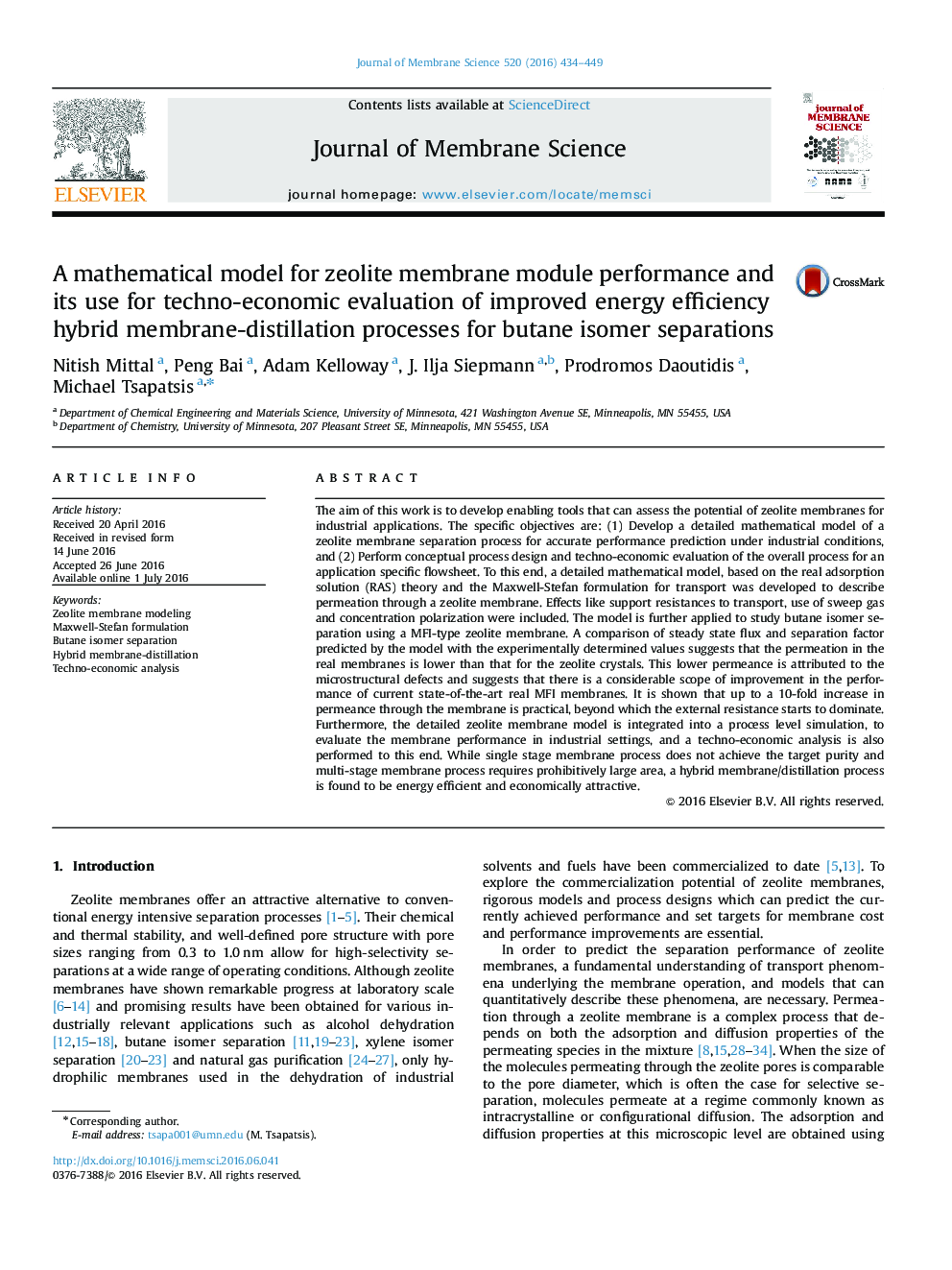| کد مقاله | کد نشریه | سال انتشار | مقاله انگلیسی | نسخه تمام متن |
|---|---|---|---|---|
| 632181 | 1455979 | 2016 | 16 صفحه PDF | دانلود رایگان |
• Zeolite membrane modeling using Real Adsorption Solution Theory and Maxwell-Stefan formulation.
• Support resistances to transport, use of sweep gas and concentration polarization are also accounted.
• Model applied to study butane isomer separation using a MFI-type zeolite membrane suggests that permeation in the real membranes is lower than that for the crystals.
• Hybrid membrane-distillation is better suited as compared to stand-alone membrane process for butane isomer separation.
• Techno-economic analysis suggests payback period of ~3 years at $5000/m2 for a 10-fold improvement in membrane permeation.
The aim of this work is to develop enabling tools that can assess the potential of zeolite membranes for industrial applications. The specific objectives are: (1) Develop a detailed mathematical model of a zeolite membrane separation process for accurate performance prediction under industrial conditions, and (2) Perform conceptual process design and techno-economic evaluation of the overall process for an application specific flowsheet. To this end, a detailed mathematical model, based on the real adsorption solution (RAS) theory and the Maxwell-Stefan formulation for transport was developed to describe permeation through a zeolite membrane. Effects like support resistances to transport, use of sweep gas and concentration polarization were included. The model is further applied to study butane isomer separation using a MFI-type zeolite membrane. A comparison of steady state flux and separation factor predicted by the model with the experimentally determined values suggests that the permeation in the real membranes is lower than that for the zeolite crystals. This lower permeance is attributed to the microstructural defects and suggests that there is a considerable scope of improvement in the performance of current state-of-the-art real MFI membranes. It is shown that up to a 10-fold increase in permeance through the membrane is practical, beyond which the external resistance starts to dominate. Furthermore, the detailed zeolite membrane model is integrated into a process level simulation, to evaluate the membrane performance in industrial settings, and a techno-economic analysis is also performed to this end. While single stage membrane process does not achieve the target purity and multi-stage membrane process requires prohibitively large area, a hybrid membrane/distillation process is found to be energy efficient and economically attractive.
Figure optionsDownload high-quality image (226 K)Download as PowerPoint slide
Journal: Journal of Membrane Science - Volume 520, 15 December 2016, Pages 434–449
